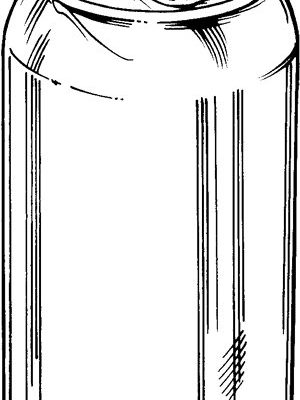
If you own a Yamaha soundbar, you probably know their remotes are usually pretty streamlined. They’re made to work seamlessly with the soundbar itself, maybe the TV’s volume, but controlling a DVD player—now that’s a different trick. I get it: the fewer gadgets sitting in the living room, the better. So, honestly, can the Yamaha soundbar remote be programmed to handle your DVD player, or is that wishful thinking? Let’s break it all down, without any techy mumbo-jumbo.
How Yamaha Soundbar Remotes Are Designed
Here’s the thing: most Yamaha soundbar remotes aren’t universal remotes. Think of them like a car key that only fits one make and model. These remotes are typically designed to pair with just the soundbar, sometimes letting you tweak audio settings, change inputs, or adjust the volume. That’s it. The buttons are minimal for a reason—simplicity.
What makes Yamaha soundbar remotes unique is that they use a specific set of IR (infrared) codes. They’re not built to “learn” other devices’ codes like a true universal remote would. This means you won’t find a magic button combo, secret programming code, or sync process that suddenly lets the remote control a random DVD player. When Yamaha designed these remotes, they had straightforward use in mind.
If you’ve ever flipped your Yamaha remote over, you’ll probably notice there isn’t even a “set” or “program” button. No hidden compartments for magic. The challenge is, those DVD players—especially ones from other brands—require a completely different set of signals. It’s like asking someone who only speaks French to suddenly understand Mandarin. The hardware just doesn’t match up.
Universal Remotes: What Makes Them Different?
You might be wondering, “Okay, so what’s the big deal with universal remotes?” Honestly, they’re the Swiss army knives of the remote world. Unlike your Yamaha soundbar remote, universal remotes are packed with programming modes, code lists, and IR learning features. You can teach them to mimic nearly any device—TVs, DVD players, soundbars, you name it.
Here’s how it usually works: you grab a universal remote, punch in a code from the manual (or use a pairing feature), and suddenly you’re flipping through DVD menus and adjusting soundbar bass from a single handheld device. That’s why most households with lots of entertainment gear eventually invest in one. It’s less “Why do I have three remotes?” and more “Ahh, peace at last.”
If you want the real all-in-one experience, a solid universal remote is usually your best bet. Just check that it supports your Yamaha soundbar and your specific DVD player. Most major brands (like Logitech Harmony or GE) cover tons of models. But your Yamaha soundbar remote? It’s just not built to play that universal role.
Why Can’t You Sync Yamaha Soundbar Remotes With DVD Players?
Let me explain why your Yamaha soundbar remote can’t just magically pair or sync with a DVD player. It all comes down to how device remotes are designed and the technology inside. Soundbar remotes from Yamaha are pretty specialized—they send out signal codes that match only the soundbar (and maybe a Yamaha subwoofer). Those codes are like secret handshakes; only devices who know the handshake respond.
DVD players, even ones from Yamaha, use a different set of codes. Sure, they’re both controlled by IR beams, but the “language” is different. Even if you feel like doing a little remote surgery—opening it up or trying to reset it—there’s just no built-in way to program extra device codes. Yamaha didn’t put those features in because, frankly, they figured most folks would use the original DVD remote, or grab a universal one if they wanted that kind of control.
You might spot “learning” remotes from some manufacturers that can be programmed to copy codes from other remotes. But Yamaha soundbar remotes (except for a few rare exceptions in pro audio gear) don’t have this functionality. If you’ve searched the manual, hunted for a hidden code, or even tried some code from the internet—trust me, you’re not alone. But it’s not you; it’s the hardware.
Common Problems People Face With Soundbar and DVD Player Remotes
Honestly, it’s not just about wanting fewer remotes. The biggest headache people run into is *misplaced remotes*. Kids hide them, they slip between couch cushions, or, in my case, get chewed by the dog. Then, when you finally find the right remote, the *battery* is dead. Of course.
Sometimes people try to “pair” the soundbar remote by holding down random buttons, hoping to trigger a sync mode. I’ve been there—nothing happens. Others dig up the user manual, expecting to find a programming section for DVD players, but nope. You just get simple setup instructions for the soundbar and basic troubleshooting tips like “replace battery” or “reset remote.”
The more gadgets you have (soundbar, TV, DVD player, streaming stick), the more you feel like you’re running a spaceship. That’s why the demand for universal solutions is so high—nobody wants to remember four sets of button combos. But if you’re sticking with the soundbar remote, just know that there are limits, by design.
Workarounds: Is There REALLY No Way to Program a Yamaha Soundbar Remote to a DVD Player?
I wish there was a clever hack here. Maybe a secret code you could punch in to unlock a hidden feature. But, in almost every case, Yamaha soundbar remotes just aren’t programmable for other devices like DVD players. It’s like trying to use your house key to start your neighbor’s car—it just wasn’t made for it.
Here’s a thought, though: some TVs can be set up so their remote controls both the TV and the soundbar—thanks to HDMI-CEC (Consumer Electronics Control). If your TV, soundbar, and DVD player are all connected via HDMI and support CEC, you *might* be able to use the TV’s remote to control everything—volume, playback, inputs, and more. But that’s a feature of the TV remote, not the Yamaha remote. It’s a roundabout way, but it’s sometimes effective.
A few Yamaha soundbars support basic TV remote learning for volume and power, so if you’re hoping to cut down on remotes, that’s worth looking into—but it won’t help with DVD controls. If you’re stubborn (like me) and hate giving up, try connecting your devices with CEC-enabled HDMI cables, then use your TV’s remote for as much as possible. But for DVD playback functions—play, pause, menu, skip—you won’t get there using just a Yamaha soundbar remote.
Alternatives for Simpler Remote Control
So what’s a person to do? If you genuinely want one remote to rule them all, here’s what most people find works best:
- Universal remote: These are hands-down the easiest solution. Look for one that lists both your soundbar and DVD player in its supported devices.
- Manufacturer apps: Some Yamaha soundbars work with Yamaha’s own mobile app, letting you control the soundbar from your phone. Not helpful for DVD players, but at least your phone is a backup remote.
- HDMI-CEC setup: It’s worth repeating—if your devices are all modern and support HDMI-CEC, you can sometimes use your TV’s remote to control multiple devices at once. This takes a bit of setup in the TV’s settings menu, but it’s surprisingly handy when it works.
- Remote finder gadgets: Okay, not a programming solution, but sticking a tracking device on your remotes can save your sanity if you keep losing them. Just saying.
If you’re tired of remote chaos, universal remotes or HDMI-CEC are your secret weapons. Yamaha soundbar remotes just weren’t built to do it all, and sometimes, that’s okay.
Comparing Remote Types: Brand vs Universal
If you’re curious about the differences, here’s a quick comparison:
| Yamaha Soundbar Remote | Universal Remote |
| Controls Yamaha soundbar only (and maybe some TV functions) | Can be programmed to control soundbar, TV, DVD player, streaming devices, etc. |
| No programming codes, sync, or pairing with other brands | Uses codes or learning feature to mimic other remotes |
| No “learning” feature—can’t copy other remotes | Often supports learning mode and advanced setups |
| Simple, streamlined, fewer buttons | More complex, lots of buttons, customizable |
This table really sums it up. If you’re after versatility, universal is the way to go. Yamaha’s remote is great for what it’s made for—but it’s not your all-in-one solution.
When Should You Replace or Upgrade Your Remote?
Here’s a personal opinion: if you’re constantly frustrated, searching for lost remotes, or switching back and forth between four of them, it might be time to upgrade. Universal remotes aren’t that expensive anymore, and they save you a ton of hassle in the long run.
If your Yamaha soundbar remote is lost or broken, you could get a replacement, but honestly, why not use that as an opportunity to upgrade to a universal one? Just double-check that the code list in the new remote includes your specific soundbar model—sometimes certain Yamaha soundbars use unusual codes, so it’s worth a quick search beforehand.
If you’re nervous about setting up a universal remote, they usually include really clear instructions, or even online setup tools. But hey, if you love the simplicity of the Yamaha remote for music and movie nights, no shame in sticking with what works—just keep the DVD player’s remote handy!
Wrapping Up: Embrace Simplicity (or Go Universal!)
At the end of the day, the answer’s pretty clear: you simply can’t program a Yamaha soundbar remote to control a DVD player. These remotes were designed to do their job, and only their job. It might feel a bit limiting, but it means fewer accidental button presses and “How did I get to this menu?” moments.
If you’re dreaming of one-remote-to-rule-them-all, universal remotes or HDMI-CEC are your best friends. Otherwise, keep the remotes close (and maybe buy some extra batteries). Sometimes, simplicity’s a blessing—even if you do need to double up for movie night.
